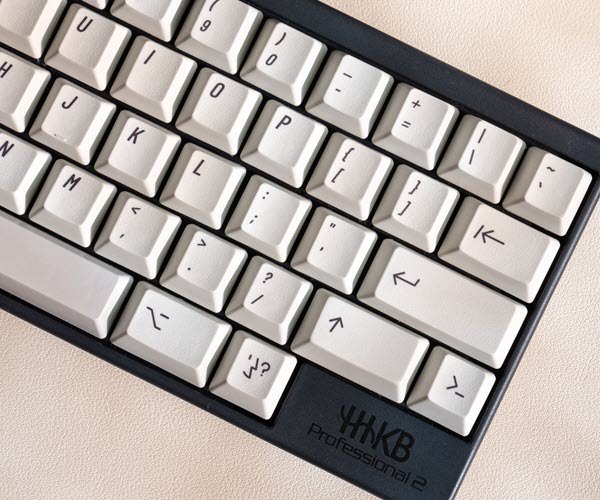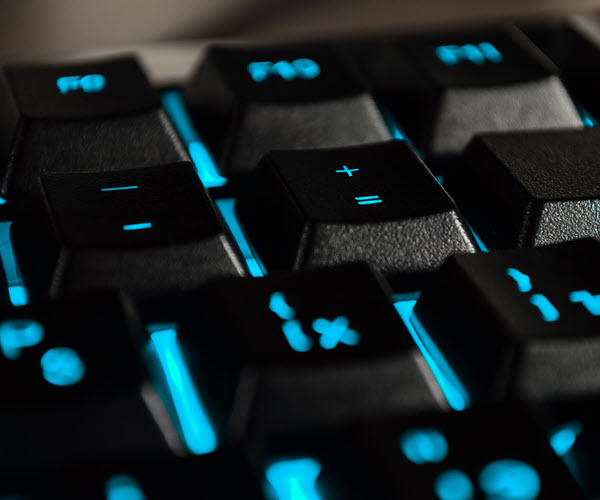The Complete Guide to Mechanical Keyboard Switches
Researching, maintaining, and changing mechanical keyboard switches are all crucial elements of the hobby

Researching, maintaining, and changing mechanical keyboard switches are all crucial elements of the hobby
There’s a striking variety of mechanical keyboard switches to choose from, each with a different look and feel. Finding the perfect combination of switch and key cap is a ticket to keyboard paradise, but it takes research and planning for a build to come together.
To help with your journey, we’ve created this mechanical keyboard switch guide with both pros and newcomers in mind. After reading it, you’ll have a better understanding of switches and how to maintain them.
If there’s such a thing as “standard” mechanical keyboard switches, it’s linear switches. They offer light and smooth presses from the top to the actuation point where a keypress is registered to the bottom. Linear switches are often used in competitive gaming circuits because the lack of feedback allows for faster button presses. They also tend to be the quietest of the three mechanical keyboard switch types.
All switch types make some amount of noise, but the most joyfully loud is the aptly named clicky switch, which gets its name from the satisfying “schlunk” sound it makes when pressed. These switches feel deliberate and weighty to use. They’re delightful for keyboard enthusiasts who want the typing equivalent of ambient rain, but be aware that the loud sound might upset your officemates.
If you’re looking for a middle ground between linear and clicky switches, tactile is the way to go. Tactile switches will give you noticeable feedback around the actuation point, but they aren’t as loud as clicky switches — making them a great pick for quiet office environments. Tactile switches are versatile, so you shouldn’t encounter issues if you’re typing a lot while gaming, working, or casually browsing the internet.
For a deeper breakdown of keyboard switch types, read our blog “The 3 Main Types of Mechanical Keyboard Switches Explained.”
Learn what makes them click
The progenitor of most mechanical keyboard switches as we know them today, Cherry MX has created some of the most common and popular options currently available.
The Cherry MX Red series of linear switches is just about everywhere. They’re particularly popular with gamers thanks to their low resistance, which allows for faster reactions.
The MX Brown’s claim to fame is its noticeable feedback. This tactile switch has a soft pressure point and is a pleasure to use and listen to.
Cherry MX Blue switches are clicky and offer satisfying audio feedback with each press. They’re best suited for use at home, unless all your coworkers love the sound too.
Founded in 1990, Kailh is a leading manufacturer of key switches. Kailh partners with a number of electronics manufacturers, so its products are available in a lot of gadgets. However, its consumer-facing lineup emphasizes mechanical key switches.
BOX switches have an extra enclosure around their stems to keep dirt and moisture out of the switch, though it’s also helpful for stability. The satisfyingly clicky BOX Jade switches are some of the loudest available.
Turbo switches are some of Kailh’s most recent additions. They use low-friction POM plastic on their stems that gives them fast, smooth actuation. The Turbo series includes three linear options and one tactile option.
The KK series is speedy and clicky. Its switches feature a short key travel distance. Their understated design gives them a look that’s well suited for daily driver work keyboards.
Like many other manufacturers, Gateron has stuck to the fundamentals of key switch design laid out by Cherry MX. However, that hasn’t stopped it from innovating. The company’s designs made them popular among linear key switch fans.
With multiple versions for linear, tactile, and clicky switches, the Gateron Milky line boasts a solid look and feel. Though they don’t come prelubricated, many users find they’re just fine to use right out of the box.
Ink switches only come in linear and clicky designs, though even tactile fans may be drawn to their unique aesthetic. They have dark, transparent housings inspired by Chinese ink, with black-plated springs and metal contact blades to complement their sleek look.
The G-Pro series of switches is built for RGB lovers and gamers (though that Venn diagram is practically a circle). The switches have a light-guiding column that helps with illumination, making them mesmerizing to see in person.
Check out "The Complete Guide to Kailh Keyboard Switches" for more info and "The Complete Guide to Gateron Keyboard Switches" for more information.
How to find the perfect keystroke
You can find switches that meet your performance and sound preferences with some careful digging, and it mostly comes down to a matter of taste. Keyboard switches are given a decibel rating for their noise output that will indicate how much sound they produce.

You should consider the environment you’ll use your keyboard in before buying any option, as louder mechanical switches can come across as obnoxious in shared spaces.
To see more keyboard switches across the noise spectrum, read "5 of the Quietest Mechanical Keyboard Switches You Can Get" for more info and "5 of the Loudest Mechanical Keyboard Switches You Can Buy"
Did You Know? HHKB uses Topre switches, which have a soft and tactile sound profile.Click here to learn more.
Learn what makes them click
Competitive gamers are well aware of the edge that their hardware gives them, whether it’s a high-end monitor, headphones, or another piece of equipment. Key switches are no exception. If you’re looking for best-in-class gaming performance, the linear Cherry MX Red switch will give you the edge you’re after.

You can find more stellar gaming switches in our guide "What Are the Best Keyboard Switches for Gaming?"

For more information on Topre switches, read "Topre Keyboard Switches: Everything You Ever Wanted to Know."

Using the keycap puller, lift the keycap slowly but firmly. The switch may come off with the keycap, but you can use your tools to hold the switch in one hand and pull the keycap off with the other.
Keep keycaps organized to save some time if you're reusing the keycap with new switches, as keeping them in order makes the replacement process easier. This is especially important for blank keycaps and custom layouts, which can have problems if they’re misplaced. Repeat this process for each key cap.
Align the switch and push it into place. The switch should slide into the slot easily, so double-check for debris and proper alignment if it hits a snag.
Push the keycap onto the new switch, and you’re set.
If you’d like more information, read our blog “How to Change & Lube Mechanical Keyboard Switches.”
Everyone has their own taste for keyboard switches, but many enthusiasts agree that there are standouts. You’ll still want to pay attention to the type of switch you’re investing in, as it will tangibly affect the sound and feel that you get out of each press. Here are some of the top choices.

Many in the mechanical keyboard community will sing the praises of Cherry MX switches. There are, after all, valid reasons that most key switches have been inspired by the Cherry MX design. And there’s an option for any preference.
Kailh’s Box Jade is a remarkable option for clicky switch fans, offering two satisfying chirps with each press. While they’re loud, they aren’t overwhelming. Plus, they’re easier to press than some of Kailh’s other switches, which makes them a great option for typists.
For other options, check out our blog “The 5 Best Mechanical Keyboard Switches of All Time.”